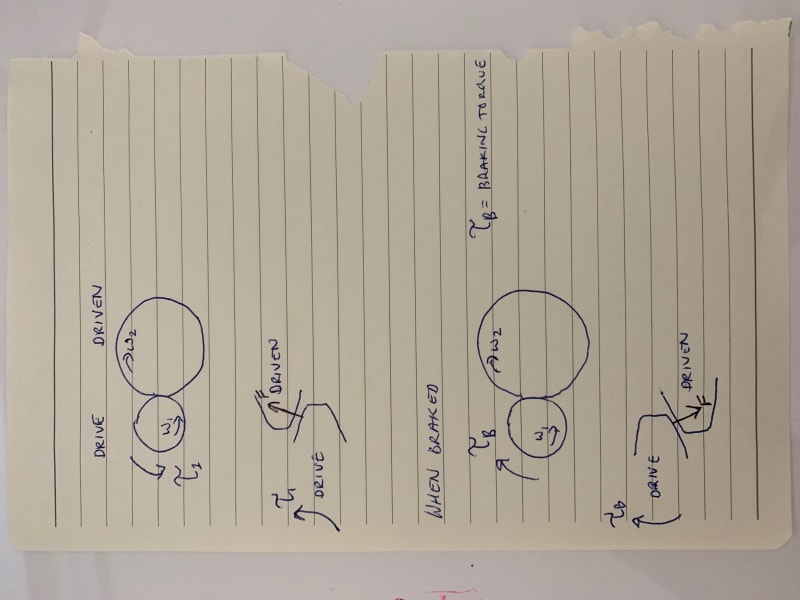NJAus1 said:
If I brake the drive gear by applying a negative torque then this torque (and force) is applied at the pitch line of the gear teeth at the opposite face and in the opposite direction?
No. The teeth already in contact remain so, but the contact forces changes in response to the change in torque between the gears.
If braking torque is applied to the 'driven' gear and the 'drive' gear still has motor torque applied, the braking torque just acts as an increase in load. The teeth which were already in contact remain so, and the load between the gears increases to T1 + TB.
If braking torque is applied to the 'driven' gear and the 'drive' gear has its motor switched off, but not disconnected, the teeth already in contact remain so and the load between the gears is TB + T(whatever it takes to backdrive the motor or other drivetrain upstream of the 'drive' gear).
If braking torque is applied to the 'driven' gear and the 'drive' gear is disconnected from the motor, the teeth in contact remain so, and the load between the gears is TB + T(whatever it takes to slow down the inertia of the 'drive' gear which is already spinning at time = 0).
Whether the driven gear is being driven OR braked, the drive gear always wants to go 'faster' than the driven gear. The only thing preventing it from doing so is the load being absorbed by the driven gear. Whether that load is doing meaningful work or is being converted to heat via a brake does not matter. The drive gear does not 'know' what the 'driven' gear is pushing, it only knows that the driven gear is moving slower than it 'wants' to.


